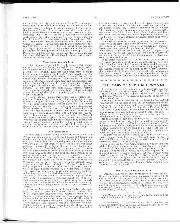
The Cars of Grp. Capt. Wynne
It is always interesting to talk to people about the cars they have owned and why they disposed of them. The other day I chatted with Grp. Capt. Wynne, whose…

Hill vs Schumacher made gripping viewing in '95
Grand Prix Photo
Culturally and politically, this was a time of a change in a world that was about to have its horizons broadened by something called ‘the internet’, whatever that might be…
In Britain, the Labour Party was starting to rebuild momentum under the stewardship of Tony Blair seeking to wrest governance from the Tories for the first time since 1979. And the UK became a focal point for the music industry as Britpop approached its zenith, Blur and Oasis making their way from the arts section to the front of newspapers. Despite having been formed in Sheffield towards the end of the 1970s, Pulp managed to tag along with this new movement, and charismatic frontman Jarvis Cocker, below, became a star in his thirties.
A couple of years his senior, Damon Hill was likewise liable to be headline news as he and Michael Schumacher – both now armed with Renault’s potent V10 – renewed Formula 1 hostilities in the slipstream of their oft-fractious title battle the previous season.
Adrian Newey’s Williams FW17 was perhaps a more efficient proposition than Benetton’s B195, but Schumacher was able to compensate effectively with his customary blend of force and guile. When the pair collided at Silverstone and Monza, however, the finger of blame pointed at Hill. On both occasions, Schumacher’s team-mate Johnny Herbert was on hand to pick up the pieces and record his first two grand prix victories. David Coulthard (Williams) also became a maiden grand prix winner, in Portugal, while Jean Alesi (Ferrari) scored what was to be his sole F1 triumph after transmission trouble hobbled leader Schumacher in Montreal.
Four years earlier Herbert had shared an unexpected victory in the Le Mans 24 Hours, he, Bertrand Gachot and Volker Weidler guiding their Mazda to victory. The 1995 race also produced a turn-up – not least because Gordon Murray’s McLaren was never designed with racing in mind. There were seven F1 GTRs on the grid when the car made its Le Mans debut. The sports prototypes were significantly faster, but also more fragile – and the McLaren of JJ Lehto, Yannick Dalmas and Masanori Sekiya worked its way to the front, the Finn lapping up to half a minute faster than rivals. Mazda’s victory had been the first in the event for a Japanese manufacturer; Sekiya’s was the first for a Japanese driver.
In America, this was the final campaign before the CART/Indy Racing League split that diluted open-wheeler combat for a number of years. Jacques Villeneuve’s victory, below, in the Indianapolis 500 was no surprise. It was one of four wins that made him that season’s champion, his final act before decamping to F1 – but the manner of its execution was remarkable.

Johnny Herbert, home win hero at Silverstone
Grand Prix Photo
The Canadian had been handed a two-lap penalty for passing the pace car during a full-course caution, but clawed his way back into contention thanks to a combination of astute strategy and good fortune. He finished second on the road to Scott Goodyear, but the latter was demoted for the same offence that had previously compromised Villeneuve…
While Colin McRae’s WRC exploits had made him a household name – and transformed Subaru into a cult brand – his younger brother Alister was carving a reputation all his own. At the wheel of a Nissan Sunny GTi, co-driven by David Senior, the younger McRae emulated father Jimmy (five times a winner in the 1980s) and his older brother (crowned in 1991 and 1992) by taking the British Rally Championship title.
At the campaign’s end he switched to a Ford Escort Cosworth for the RAC Rally and, with Chris Wood alongside, finished fourth, behind the Subarus of Colin, Sainz and Burns. A fine performance, but the eyes of the world were focused firmly elsewhere.